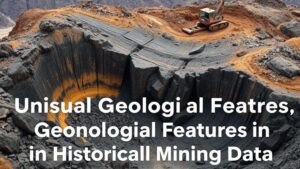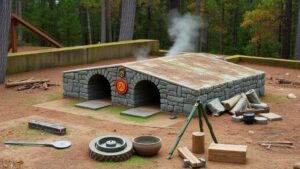Using Satellite Imagery and LiDAR to Identify Relic-Rich Terrain Features
Using Satellite Imagery and LiDAR to Identify Relic-Rich Terrain Features
The integration of satellite imagery and Light Detection and Ranging (LiDAR) technology has revolutionized archeological research, particularly in identifying relic-rich terrain features. This article examines how these technologies can be harnessed to enhance the understanding of ancient landscapes and cultural heritage sites, with specific examples demonstrating their effectiveness in historical investigation.
Introduction
Archeological studies often rely on the analysis of terrain features to uncover relics of past civilizations. Traditional survey methods can be labor-intensive and time-consuming, particularly in expansive or challenging environments. advent of satellite imagery and LiDAR systems provides new opportunities for researchers to analyze these terrains efficiently and accurately. Satellite imagery offers a broad perspective, capturing large areas in a single frame, while LiDAR provides detailed topographic information, enabling the detection of subtle features beneath vegetation cover.
The Role of Satellite Imagery
Satellite imagery captures two-dimensional representations of the Earths surface, providing vital information on land use, vegetation density, and alterations in topography. Since the launch of Landsat 1 in 1975, satellites have been equipped with sensors capable of multi-spectral imaging, enabling the detection of surface characteristics based on reflected light.
For example, the use of high-resolution satellite imagery has proven useful in identifying ancient agricultural terraces in the Andean region of Peru. A study conducted by McKechnie et al. (2018) utilized the 30-meter resolution Landsat imagery to detect patterns of ancient land use that indicate complex agricultural practices. Similarly, in the Amazon rainforest, satellite-derived data has revealed extensive geoglyphs, once thought to be the work of nomadic tribes, suggesting a more permanent settlement pattern (Heckenberger et al., 2003).
LiDAR Technology: Principles and Applications
LiDAR technology employs laser pulses to measure distances to the Earths surface, generating precise three-dimensional maps. By using millions of laser returns, LiDAR can penetrate forest canopies, revealing features that are obscured in conventional imagery. An example of this technology’s application is the discovery of previously unknown Mayan cities in Guatemala, where LiDAR data revealed extensive urban layouts including pyramids, palaces, and road systems that had been hidden under dense tropical vegetation (Culley et al., 2017).
- LiDAR can detect subtle differences in elevation, highlighting ancient earthworks and mounds.
- It is particularly effective in regions with thick vegetation, where traditional surveys may fail.
Combining Satellite Imagery and LiDAR
The true potential of these technologies is realized when they are combined. Satellite imagery provides a broad overview of potential sites, while LiDAR can offer detailed insights into topographical variations that suggest human activity. This complementary relationship enhances site identification and prioritization for further ground surveys.
A noteworthy case study involves the application of combined satellite and LiDAR data in the archaeological landscape of the Central Peruvian Andes. By integrating the extensive spatial context provided by the satellite imagery with the high-resolution elevation models generated by LiDAR, researchers could pinpoint areas of interest that warranted further investigation, leading to the discovery of significant pre-Columbian sites that might have otherwise remained undiscovered (Hegmon et al., 2019).
Challenges and Limitations
Despite the advantages of using satellite imagery and LiDAR, challenges remain. The cost associated with acquiring LiDAR data can be substantial, particularly for large-scale surveys. Also, while satellite imagery can provide extensive coverage, factors such as cloud cover and temporal resolution may limit its effectiveness in certain environments.
- Cloud cover can obscure satellite imagery and hinder data interpretation.
- High costs may restrict access to advanced LiDAR technologies for smaller research institutions.
Conclusion
The application of satellite imagery and LiDAR technology in identifying relic-rich terrain features represents a significant advancement in the field of archaeology. These technologies not only enhance the efficiency of archaeological surveys but also broaden the scope of potential discoveries. Continued research and advancements in these fields will undoubtedly lead to more profound insights into human history and prehistoric landscapes.
Actionable Takeaways
- Archeological researchers should consider integrating satellite imagery with LiDAR data to enhance the effectiveness of their surveys.
- Investments in training personnel to interpret geospatial data could facilitate the timely identification of significant cultural features.
- Collaboration between technological experts and archaeologists can maximize the potential of these methodologies in future studies.
By harnessing the strengths of both satellite imagery and LiDAR technologies, researchers can uncover hidden aspects of our past, illuminating the rich tapestry of human civilization.



